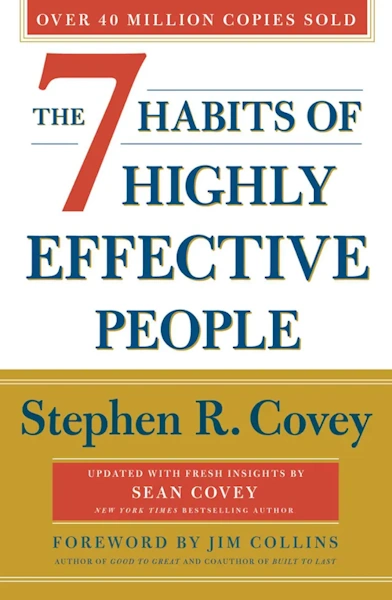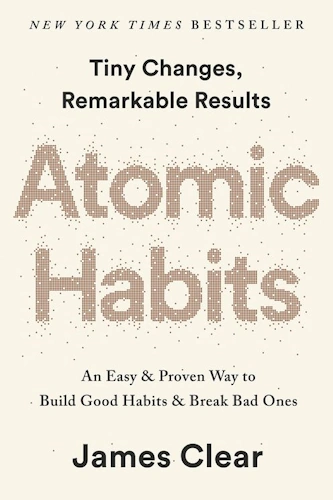Discovering innovative and playful ways to foster a child’s growth and learning is a thrilling journey. Interactive games aren’t just fun; they’re tools that enhance cognitive, emotional, and physical skills in children. Here’s a curated list of engaging games that cultivate various facets of a child’s development
SplashLearn Online Games
SplashLearn Online Games offer an expansive platform geared towards children in grades PreK-5, presenting a vibrant array of over 4,000 interactive activities and games. This dynamic learning program spans various subjects, including math, reading, and coding, providing a comprehensive educational experience that captivates and engages young learners.
Designed with a focus on fostering engagement and interactivity, SplashLearn transforms learning into an enjoyable journey. Through its rich library of games, it aims to make educational concepts relatable and accessible, allowing children to grasp fundamental skills in a fun and effective manner.
SplashLearn’s user-friendly interface and engaging gameplay aim to make learning a rewarding experience, fostering a love for education in children while supporting their academic development across multiple subjects.
Memory Palace Game
The Memory Palace Game is an exceptional tool for enhancing memory and cognitive skills in both children and adults. This technique, rooted in ancient mnemonic methods, revolves around memorizing sequences of objects or information by associating them with familiar locations or rooms within an imaginary palace or familiar setting.
This game involves creating a vivid mental space, often a familiar place like a house, and mentally placing items in specific locations within that space. By associating these items with the different rooms or areas in the palace, players can recall the sequence by mentally retracing their steps through the palace.
When played with children, the Memory Palace Game can involve using everyday objects around the house. Parents or educators can encourage children to memorize and recall sequences of items placed in different rooms or locations. This interactive approach transforms memory-building exercises into engaging and creative challenges.
This game not only sharpens memory but also enhances concentration, visualization skills, and mental agility. It’s a fantastic way to make learning and remembering more fun and interactive, fostering an imaginative and associative approach to memory development in kids.
Treasure Hunt
Encouraging problem-solving, this game invites children of all ages to follow clues around the house, fostering critical thinking in an exciting quest.
How It Works:
- Setup: Begin by hiding clues or objects strategically around a designated area—this could be indoors or outdoors, depending on space and available resources.
- Creating Clues: Craft riddles, puzzles, or written clues that lead from one location to the next, each clue progressively guiding children closer to the “treasure.”
- Theme and Storyline: Develop a storyline or theme for the treasure hunt to make it more engaging. For instance, it could revolve around pirates, historical discoveries, or fictional quests.
- Challenges: Incorporate small challenges or tasks at each location that require problem-solving or physical activity to proceed to the next clue. This could involve decoding messages, solving puzzles, or completing mini-games.
- Variations: Tailor the game based on the age group participating. For younger children, use picture clues, while older kids might enjoy more complex riddles or puzzles.
Benefits:
- Problem-Solving: Encourages children to think critically and solve problems independently.
- Creativity: Sparks imagination and creativity as they follow clues and engage with the storyline.
- Teamwork: Ideal for group play, fostering collaboration and teamwork if played in teams or pairs.
- Physical Activity: Promotes physical activity, especially if the hunt takes place outdoors.
Educational Opportunities:
- Cognitive Skills: Enhances logical thinking, planning, and deductive reasoning.
- Language Development: Encourages reading, comprehension, and decoding skills through written or verbal clues.
- Spatial Awareness: Challenges spatial awareness and navigational skills as they move from clue to clue.
Bring Me the Objects
A language and communication skill booster, this game involves requesting objects based on color or shape, challenging your child’s abilities in fun ways.
Objective: The main goal of “Bring Me the Objects” is to promote language development, improve communication skills, and stimulate cognitive abilities.
How It Works:
- Setting Up: Begin by asking your child to find and bring specific objects from around the house or within a designated area.
- Requesting Objects: Prompt your child to retrieve items based on your instructions. For instance, you might ask for objects of a specific color, shape, size, or function.
- Level of Complexity: Adjust the difficulty level based on your child’s age and skill level. Start with simple requests and gradually increase complexity as their abilities develop.
- Variety in Requests: Encourage diversity in objects requested to broaden vocabulary and conceptual understanding.
- Encouragement and Guidance: Provide positive reinforcement and guidance throughout the game, acknowledging their efforts and helping them understand instructions if needed.
Benefits:
- Language Development: Boosts vocabulary as children learn the names of various objects and associate them with their characteristics.
- Communication Skills: Encourages effective communication and comprehension as children interpret requests and respond appropriately.
- Critical Thinking: Promotes cognitive skills as children assess and categorize objects based on given criteria.
- Attention to Detail: Enhances observational skills as children search for specific items.
Educational Opportunities:
- Vocabulary Building: Expands the child’s vocabulary and helps them articulate and express themselves better.
- Conceptual Understanding: Reinforces concepts such as colors, shapes, sizes, and functions of everyday objects.
- Listening Skills: Improves listening and comprehension abilities by following instructions accurately.
Engagement and Interaction: Creates a fun and interactive learning environment where children actively participate and engage in the learning process.
Does it Float?
The primary objective of “Does it Float?” is to introduce children to the concept of buoyancy, encouraging them to predict and observe whether objects sink or float in water.
How It Works:
- Materials Needed: Gather various objects of different materials, shapes, and sizes that can be tested in water.
- Testing Objects: Encourage your child to predict whether each object will float or sink before placing it in a container of water.
- Observation and Discussion: After testing each object, discuss the results together. Encourage your child to articulate their observations and understand why certain objects float while others sink.
- Exploring Properties: Use the activity to explore properties like density, weight, shape, and material, discussing how these factors affect an object’s ability to float.
Engagement and Discovery:
- Hands-On Exploration: Encourages hands-on exploration and experimentation, fostering curiosity and a sense of discovery.
- Critical Thinking: Promotes critical thinking as children hypothesize, test their hypotheses, and draw conclusions based on their observations.
- Learning through Play: Offers a playful approach to introduce scientific concepts, making learning enjoyable and memorable.
Educational Opportunities:
- Understanding Buoyancy: Teaches the concept of buoyancy by demonstrating how certain objects are buoyant and others are not.
- Scientific Reasoning: Develops basic scientific reasoning skills as children predict outcomes and observe results.
- Properties of Materials: Introduces the idea that different materials have varying densities affecting their ability to float or sink.
Learning Beyond the Game:
- Real-World Applications: Provides an opportunity to discuss real-life scenarios involving buoyancy, such as boats and flotation devices.
- Encouraging Questions: Stimulates curiosity and encourages children to ask questions about why things happen the way they do.
Parental Involvement:
- Guidance and Explanation: Parents can guide discussions and explanations, enhancing the child’s understanding of scientific principles.
- Encouraging Inquiry: Inspires children to explore and ask questions about the natural world around them.
“Does it Float?” is an interactive and engaging game that not only introduces children to scientific concepts but also encourages them to think critically, predict outcomes, and observe the world through an inquisitive lens.
Guess with Your Hands!
The primary objective of “Guess with Your Hands!” is to heighten a child’s sensory perception by engaging them in a tactile exploration of various objects to identify them based solely on touch.
How It Works:
- Blindfolded Exploration: Blindfold your child and present them with objects of different textures, shapes, and sizes.
- Sensory Identification: Encourage your child to touch and feel the objects, focusing on their textures, edges, and shapes.
- Object Recognition: Based solely on tactile cues, ask the child to guess and identify each object without using their sight.
Engagement and Discovery:
- Sensory Stimulation: Stimulates the sense of touch, fostering a deeper understanding of textures and shapes.
- Hands-On Learning: Promotes experiential learning as children explore and guess objects through touch.
Educational Opportunities:
- Tactile Development: Enhances tactile perception and sensitivity, improving a child’s ability to differentiate between textures and shapes.
- Observational Skills: Encourages keen observation and heightened attention to tactile details.
- Sensory Learning: Facilitates learning through sensory experiences, strengthening connections between tactile perception and object recognition.
Learning Beyond the Game:
- Exploration of Attributes: Encourages discussions about different textures and shapes, broadening a child’s vocabulary to describe tactile sensations.
- Real-Life Application: Relates to daily tasks where touch plays a crucial role, such as identifying items in the dark or feeling for objects without visual cues.
Parental Involvement:
- Guiding Exploration: Parents can encourage the exploration of various textures and shapes, fostering a sense of curiosity and discovery.
- Supporting Discovery: Provides explanations and guidance, aiding the child’s understanding of different tactile attributes.
“Guess with Your Hands!” offers an interactive and sensorial experience that goes beyond visual learning, allowing children to explore their sense of touch and refine their tactile perception in a playful and engaging manner.
Carnival Ring Toss Game
The primary aim of the Carnival Ring Toss Game is to toss rings onto designated pegs or objects to develop accuracy, precision, and spatial judgment.
Gameplay:
- Setup: Arrange pegs or objects in a designated area at varying distances.
- Tossing Rings: Participants aim to toss rings onto the pegs, attempting to land them securely.
- Scoring System: Assign points for successful tosses and establish rules for different levels of difficulty.
Skill Development:
- Hand-Eye Coordination: Encourages the synchronization of hand movements with visual cues to achieve accurate tosses.
- Fine Motor Skills: Refines motor skills by perfecting the release and control of the tossing action.
- Focus and Concentration: Requires sustained attention and focus to aim and toss the rings accurately.
Engagement and Fun:
- Competition and Challenge: Creates a competitive yet enjoyable atmosphere, motivating participants to improve their accuracy.
- Adaptive Difficulty: Adjust the game’s difficulty by varying the distance between the rings and targets.
Educational Opportunities:
- Spatial Awareness: Encourages participants to judge distances and angles, enhancing spatial reasoning.
- Strategy Development: Promotes strategic thinking and planning for successful tosses.
Learning Beyond the Game:
- Persistence and Practice: Reinforces the importance of practice and persistence in achieving desired outcomes.
- Social Interaction: Fosters social engagement and teamwork when played in a group setting.
Parental Involvement:
- Guiding Technique: Parents can demonstrate tossing techniques and offer guidance to enhance accuracy.
- Encouragement: Provides encouragement and positive reinforcement to boost children’s confidence.
The Carnival Ring Toss Game offers a blend of entertainment and skill development, making it a fantastic activity for enhancing hand-eye coordination, refining motor skills, and fostering focus and determination in children.
Match My Vibe!
The main objective of “Match My Vibe!” is to encourage children to recognize and understand different emotions by mirroring facial expressions and body language.
Gameplay:
- Expression Matching: Parents or facilitators display various facial expressions and body postures, conveying different emotions.
- Child Participation: Children are encouraged to mimic or mirror the displayed expressions and body language to match the demonstrated emotion.
Skill Development:
- Emotional Intelligence: Helps children recognize and identify different emotions in themselves and others.
- Empathy Development: Encourages understanding and empathy towards different emotional states.
Engagement and Learning:
- Observation and Recognition: Promotes the ability to observe and recognize emotional cues in facial expressions and body language.
- Expression of Emotions: Provides a safe space for children to express and explore emotions freely.
Social and Emotional Learning:
- Emotional Awareness: Fosters an understanding of emotional states and the reasons behind different feelings.
- Social Interaction: Encourages children to understand and respond appropriately to the emotions of others.
Educational Opportunities:
- Communication Skills: Develops the ability to express emotions effectively through non-verbal cues.
- Cognitive Development: Enhances cognitive abilities by associating facial expressions with specific emotions.
Parental Involvement:
- Modeling Emotions: Parents serve as role models, displaying different emotions for children to emulate.
- Encouragement and Guidance: Offers support, encouragement, and guidance to help children understand and mirror emotions accurately.
Life Skills Reinforcement:
- Conflict Resolution: Encourages conflict resolution by understanding emotions and perspectives.
- Empathy Building: Fosters a caring and empathetic attitude towards others’ emotions and feelings.
Takeaway for Children:
- Empathy and Understanding: Nurtures empathy, fostering a deeper understanding of emotions and their significance.
- Social Skills: Enhances social interactions by aiding in emotional comprehension and response.
“Match My Vibe!” serves as a valuable tool for instilling emotional intelligence, empathy, and social understanding in children, fostering a more empathetic and emotionally aware mindset.
Color Sorting
The primary aim of the Color Sorting game is to familiarize children with various colors and improve their ability to categorize objects based on color.
Gameplay:
- Object Sorting: Children are tasked with sorting different objects based on their color attributes into respective groups.
- Color Identification: They identify and categorize items by colors, arranging them into designated color groups.
Skill Development:
- Color Recognition: Assists children in recognizing and distinguishing between various colors.
- Sorting Skills: Enhances their ability to categorize and organize items based on specific attributes.
Engagement and Learning:
- Visual Discrimination: Helps in developing visual discrimination skills by differentiating between colors.
- Fine Motor Skills: Refines fine motor skills through handling and arranging objects.
Educational Opportunities:
- Language Development: Expands vocabulary by associating colors with their names.
- Mathematical Concepts: Lays the groundwork for early math skills through categorization and grouping.
Learning through Play:
- Playful Engagement: Encourages learning through a fun and interactive sorting activity.
- Hands-On Experience: Offers a tactile experience that reinforces learning through physical interaction.
Parental Involvement:
- Guidance and Encouragement: Parents guide children in sorting and identifying colors, offering encouragement and praise.
- Interaction and Reinforcement: Parents actively engage in the game to reinforce color recognition and sorting skills.
Life Skills Reinforcement:
- Organizational Skills: Develops the ability to organize items based on specific attributes.
- Critical Thinking: Encourages critical thinking as children analyze and sort objects based on color.
Takeaway for Children:
- Color Recognition: Enhances proficiency in identifying and naming different colors.
- Sorting Skills: Develops categorization abilities, laying the foundation for more complex sorting tasks.
The Color Sorting game provides an enjoyable and educational way for children to familiarize themselves with colors, strengthening their color recognition and sorting capabilities while engaging in a playful and interactive learning experience.
Shape-Hole Puzzles
The “Shape-Hole Puzzles” game is a captivating and educational activity designed to enhance a child’s spatial reasoning and problem-solving skills. Here’s a comprehensive exploration of this engaging game:
Shape-Hole Puzzles: Stimulating Spatial Reasoning and Problem-Solving Skills
Objective: The primary goal of Shape-Hole Puzzles is to challenge children’s spatial thinking by fitting different shapes into corresponding holes.
Gameplay:
- Shape Matching: Children are presented with various shapes and corresponding holes or slots.
- Problem-Solving: The task involves finding the right orientation and matching the shapes to their respective holes.
Skill Development:
- Spatial Reasoning: Encourages understanding spatial relationships between objects and their corresponding shapes.
- Problem-Solving: Challenges children to strategize and find the best fit for each shape.
Engagement and Learning:
- Visual-Spatial Awareness: Improves their understanding of how shapes fit into specific spaces.
- Critical Thinking: Promotes logical thinking as they analyze shapes to find the correct match.
Educational Opportunities:
- Shape Recognition: Reinforces recognition of different shapes and their attributes.
- Fine Motor Skills: Enhances fine motor abilities by manipulating and fitting shapes into holes.
Learning through Play:
- Hands-On Experience: Offers a tactile and interactive experience for better comprehension.
- Trial and Error: Encourages experimentation and learning through trial and error.
Parental Involvement:
- Guidance and Encouragement: Parents provide guidance and support while children explore shapes and holes.
- Positive Reinforcement: Encouraging progress reinforces a positive learning environment.
Life Skills Reinforcement:
- Persistence: Encourages perseverance as children try different orientations to solve the puzzle.
- Spatial Awareness: Develops an understanding of spatial relationships and object orientation.
Takeaway for Children:
- Spatial Skills: Enhances spatial cognition and the ability to visualize and manipulate shapes.
- Problem-Solving: Develops critical thinking by solving puzzles and finding the right shape placements.
The Shape-Hole Puzzles game offers an enriching learning experience that promotes spatial thinking and problem-solving skills, fostering a child’s cognitive development in a playful and engaging manner.
Engage in these interactive games and witness the transformational impact they have on your child’s holistic development. Learning through play has never been more exciting!




